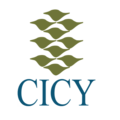Por favor, use este identificador para citar o enlazar este ítem:
http://cicy.repositorioinstitucional.mx/jspui/handle/1003/1863| Characterization of sediment microbial communities at two sites with low hydrocarbon pollution in the southeast Gulf of Mexico | |
| Pablo de Jesús Suárez Moo ARACELI LAMELAS CABELLO Itza Sugey García Bautista Luis Felipe Barahona Pérez GLORIA SANDOVAL FLORES DAVID SERGIO VALDES LOZANO Tanit Toledano Thompson ERIK MANUEL DE ATOCHA POLANCO LUGO RUBY ALEJANDRA VALDEZ OJEDA | |
| Acceso Abierto | |
| Atribución-NoComercial-SinDerivadas | |
| 10.7717/peerj.10339 | |
| BACTERIA HYDROCARBON POLLUTION SOUTHEAST GULF OF MEXICO YUCATAN MARINE SEDIMENTS | |
| Coastal ecosystems are prone to hydrocarbon pollution due to human activities, and this issue has a tremendous impact on the environment, socioeconomic consequences, and represents a hazard to humans. Bioremediation relies on the ability of bacteria to metabolize hydrocarbons with the aim of cleaning up polluted sites. Methods. The potential of naturally occurring microbial communities as oil degraders was investigated in Sisal and Progreso, two port locations in the southeast Gulf of Mexico, both with a low level of hydrocarbon pollution. To do so, we determined the diversity and composition of bacterial communities in the marine sediment during the dry and rainy seasons using 16S rRNA sequencing. Functional profile analysis (PICRUTSt2) was used to predict metabolic functions associated with hydrocarbon degradation. Results. We found a large bacterial taxonomic diversity, including some genera reported as hydrocarbon-degraders. Analyses of the alpha and beta diversity did not detect significant differences between sites or seasons, suggesting that location, season, and the contamination level detected here do not represent determining factors in the structure of the microbial communities. PICRUTSt2 predicted 10 metabolic functions associated with hydrocarbon degradation. Most bacterial genera with potential hydrocarbon bioremediation activity were generalists likely capable of degrading different hydrocarbon compounds. The bacterial composition and diversity reported here represent an initial attempt to characterize sites with low levels of contamination. This information is crucial for understanding the impact of eventual rises in hydrocarbon pollution. | |
| 2020 | |
| Artículo | |
| PeerJ 8:e10339 https://doi.org/10.7717/peerj.10339 | |
| Inglés | |
| Suárez-Moo P, Lamelas A, Garcia-Bautista I, Barahona-Pérez LF, Sandoval-Flores G, Valdes-Lozano D, Toledano-Thompson T, Polanco-Lugo E, Valdez-Ojeda R. 2020. Characterization of sediment microbial communities at two sites with low hydrocarbon pollution in the southeast Gulf of Mexico. PeerJ 8:e10339 https://doi.org/10.7717/peerj.10339 | |
| ENERGÍA | |
| Versión publicada | |
| publishedVersion - Versión publicada | |
| Aparece en las colecciones: | Artículos de Investigación Arbitrados |
Cargar archivos:
| Fichero | Tamaño | Formato | |
|---|---|---|---|
| 2020_Suarez_Moo.pdf | 3.12 MB | Adobe PDF | Visualizar/Abrir |
